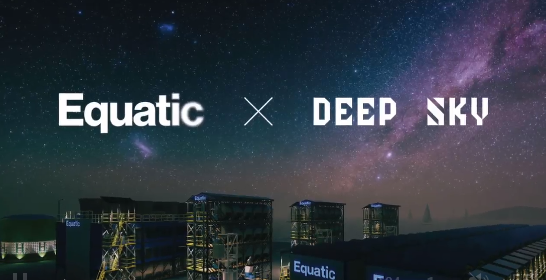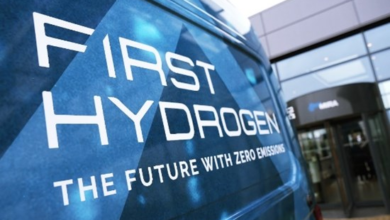Equatic in partnership with Deep Sky to produce 3,600 tonnes of green hydrogen per year in Canada

Carbon removal company Equatic, with Canadian carbon removal project developer Deep Sky, announced that engineering has commenced on North America’s first commercial-scale ocean-based carbon dioxide removal (CDR) plant.
This plant will remove 109,500 tonnes of carbon dioxide from the atmosphere and produce 3,600 tonnes of green hydrogen per year. It will be the largest ocean-based carbon removal plant in the world and will help enable Equatic to achieve CDR at less than $100 per tonne by 2030.
This development follows Equatic’s newly unveiled demonstration project, named Equatic-1, that broke ground in Tuas, Singapore in May 2024. In the U.S., Equatic was recently named a Department of Energy Carbon Dioxide Removal Purchase Pilot Prize semifinalist; the first-of-its-kind program is designed to identify CDR companies proven to offer high-integrity carbon removals and establish pathways to procure their carbon removal credits.
“Governing bodies around the world emphatically assert the need for accessible, cost-effective, and permanent carbon removal solutions, at low-cost, and with low energy requirements. Our commercial-scale development speaks directly to that need,” says Edward Muller. “Quebec is the perfect location for commercial launch given the access to non-fossil electricity and the use of hydrogen to decarbonize the province’s well-established industrial base. Just as important, Deep Sky’s experience, coupled with its local relationships, will keep us on track to be operational by 2026-2027.”
“As climate urgency grows, we need to accelerate the development of commercial facilities,” said Damien Steel. “We’re thrilled to begin the engineering phase of a commercial-scale plant with Equatic, moving closer to removing billions of tons of CO2 using the oceans to reverse global warming. The planet isn’t waiting, so we must meet the moment.”
Arup, a global sustainable development firm of designers, engineers, and environmental and technical advisors, is leading the assessment and planning of the commercial-scale plant, including siting, permitting, and stakeholder governance. The plant’s design will be based on the modular electrolyzers used at Equatic-1. This modular architecture allows the installation, operation, and maintenance of individual units to be staged and stacked, facilitating systematic and rapid expansion, as well as efficient operations.
The net energy requirement is less than 1.4 megawatt hours per tonne of carbon dioxide removed, and the electrolyzers employ Equatic’s oxygen-selective anodes that were developed with the support of the Department of Energy’s Advanced Research Projects Agency-Energy (ARPA-E) to produce green hydrogen while eliminating the unwanted production of chlorine during seawater electrolysis.
The new commercial-scale plant and all subsequent Equatic projects will adhere to the most advanced measurement, reporting, and verification (MRV) standards in electrolytic ocean-based carbon removal: ISO 14064-2:2019. Developed in partnership with EcoEngineers and the International Organization for Standardization (ISO), the MRV methodology offers an exhaustive, transparent framework for quantifying, monitoring, reporting, and verifying greenhouse gas (GHG) emissions and removals at the project level in ways that meet ISO’s rigorous and world-renowned reporting standards. Carbon credits and green hydrogen from this and future plants have been pre-sold to companies such as Boeing, and further sales are ongoing.
“Climate innovators must prioritize environmental well-being and a just transition in the regions where they operate,” says Catherine McKenna. “By safeguarding local ecosystems and existing industries with its industry-leading MRV and environmental monitoring, Equatic will set the standard of community acceptance of essential climate technology.”
